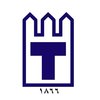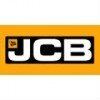Electrical Engineer
1000+ Electrical Engineer Interview Questions and Answers

Asked in CleanMax Enviro Energy Solutions

Q. What components are required for solar panel installation, and can you briefly describe them?
Solar panel installation requires several components including solar panels, inverters, mounting systems, wiring, and electrical protection devices.
Solar panels: These are the main components that convert sunlight into electricity.
Inverters: They convert the direct current (DC) produced by solar panels into alternating current (AC) that can be used in homes or fed into the grid.
Mounting systems: These are used to securely install the solar panels on rooftops or ground-mounted...read more

Asked in TVS Motor

Q. What is ohm law and current symble
Ohm's law states that the current flowing through a conductor is directly proportional to the voltage applied across it.
Ohm's law is expressed as V = I * R, where V is the voltage, I is the current, and R is the resistance.
The current symbol is represented by the letter 'I'.
Ohm's law is fundamental in understanding and analyzing electrical circuits.
Example: If a circuit has a voltage of 12 volts and a resistance of 4 ohms, the current flowing through the circuit would be 3 am...read more

Asked in Towell Engineering Group

Q. How do you perform the erection of all Electrical and Instrumentation (E&I) equipment?
The erection of E&I equipment involves the installation and assembly of electrical and instrumentation components.
Erection of E&I equipment includes the installation of electrical panels, cables, and wiring.
It also involves the assembly of instrumentation devices such as sensors, transmitters, and control systems.
Proper grounding and bonding techniques are essential during the erection process.
Testing and commissioning of the equipment is done to ensure functionality and safe...read more


Q. What is the equal area criterion?
Equal area criteria is a method to determine stability of power systems.
It is used to analyze transient stability of power systems.
It states that for a power system to be stable, the area of the power-angle curve during fault should be equal to the area of the power-angle curve after fault clearance.
It helps in determining the critical clearing angle and time required for fault clearance.
It is based on the assumption that the power system can be represented by a swing equatio...read more

Asked in R.V.R. PROJECTS

Q. What types of relays are used in protection systems?
Different types of relays are used for protection system such as overcurrent, differential, distance, and directional relays.
Overcurrent relays are used to protect against overloads and short circuits.
Differential relays are used to protect transformers and generators from internal faults.
Distance relays are used to protect transmission lines from faults.
Directional relays are used to protect against faults in specific directions.
Other types of relays used for protection incl...read more

Asked in Tenneco

Q. What is rectifier. Three phase connection
A rectifier is an electrical device that converts alternating current (AC) to direct current (DC). Three-phase connection refers to a system that uses three conductors to carry three alternating currents that are out of phase with each other.
Rectifiers are commonly used in power supplies and electronic devices to convert AC to DC.
Three-phase connections are used in industrial and commercial settings to power large motors and equipment.
Three-phase power is more efficient and p...read more
Electrical Engineer Jobs




Asked in Newmont

Q. How do you decide which motor to use in different applications?
Different types of motors are used in different applications based on their characteristics and requirements.
Select motor type based on application requirements (e.g. AC motor for household appliances, DC motor for automotive applications)
Consider factors like speed, torque, power, efficiency, and control method when choosing a motor
Use stepper motors for precise positioning in robotics and CNC machines
Utilize servo motors for applications requiring high precision and control...read more

Asked in Ashoka Buildcon

Q. What transformer rating is typically used for 50 households?
The number of transformer ratings required for 50 households depends on their power consumption and distribution network.
The power consumption of each household needs to be determined
The distribution network and voltage level also affect the transformer rating
Assuming an average power consumption of 1 kW per household, a 50 kW transformer may be required
However, this can vary greatly depending on the specific circumstances
Share interview questions and help millions of jobseekers 🌟


Asked in Newmont

Q. Why is PLC used in industrial areas instead of SCADA?
PLCs are used in industrial areas for real-time control and automation, while SCADA systems are used for monitoring and data acquisition.
PLCs are designed for real-time control of machinery and processes in industrial settings.
PLCs are more reliable and robust for controlling critical processes compared to SCADA systems.
SCADA systems are typically used for monitoring and data acquisition in industrial settings.
PLCs are better suited for controlling discrete and continuous pro...read more
Asked in Nandan Steel And Power

Q. How many motor works. How kw motor works . motor works on ac or dc.
Electric motors convert electrical energy into mechanical energy, operating on AC or DC power, with varying power ratings in kW.
Types of Motors: Common types include AC motors (like induction motors) and DC motors (like brushed and brushless motors).
Power Ratings: Motors can range from small fractional horsepower (e.g., 0.1 kW) to large industrial motors (e.g., 1000 kW or more).
AC Motors: Typically used in applications like fans, pumps, and compressors due to their efficiency...read more
Asked in Nandan Steel And Power

Q. What drive used in your plant. How many kw or amp used drive.
In our plant, we primarily use variable frequency drives (VFDs) to control motor speed and torque efficiently.
Variable Frequency Drives (VFDs): These drives adjust the frequency and voltage supplied to the motor, allowing for precise control of speed and torque.
Power Ratings: Common VFDs in our plant range from 5 kW to 200 kW, depending on the application and motor size.
Energy Efficiency: VFDs help reduce energy consumption by matching motor speed to load requirements, which ...read more

Asked in Cognizant

Q. How would you design and implement a lighting system for a 59x50 room?
To design and add lighting in a 59*50 room, consider the room's purpose, lighting requirements, and energy efficiency.
Determine the purpose of the room and the activities that will take place in it.
Calculate the required lighting levels based on the room's function and recommended standards.
Consider the room's layout and identify areas that need focused lighting, such as workstations or reading corners.
Choose appropriate lighting fixtures, such as recessed lights, pendant lig...read more

Asked in Electrical Manufacturing Company

Q. What is transforme What is bush What is relay What is buck Other
Transformers, bushings, relays, and buck converters are all electrical components used in power systems.
Transformers are devices that transfer electrical energy from one circuit to another through electromagnetic induction.
Bushings are insulating structures that allow electrical conductors to pass through walls or barriers without allowing current to leak.
Relays are switches that are operated electrically and used to control circuits by opening and closing contacts in respons...read more

Asked in Tata Steel

Q. What materials are used in transformers?
The material used in transformers is typically iron or steel.
Transformers use a magnetic core made of laminated iron or steel sheets to increase efficiency.
The core material is chosen for its magnetic properties and ability to withstand high temperatures.
Other materials such as ferrite or amorphous metal may also be used in certain types of transformers.
The winding material for the coils is typically copper or aluminum wire.

Asked in JSW Bhushan Power & Steel

Q. Can you draw the Single Line Diagram (SLD) of your plant?
The SLD (Single Line Diagram) is a graphical representation of the electrical system of a plant.
SLD shows the electrical components and their interconnections in a simplified manner.
It helps in understanding the power flow and control of the plant.
SLD includes transformers, generators, switchgear, motors, and other electrical equipment.
It also depicts protection devices, control circuits, and communication systems.
SLD is essential for troubleshooting, maintenance, and design ...read more

Asked in Isgec Hitachi Zosen

Q. Max. Carrier frequency of yaskawa A1000, What is department ISO objective, What MD calculation time.
The max carrier frequency of Yaskawa A1000 is 16kHz. Department ISO objective and MD calculation time are not related to the product.
Max carrier frequency of Yaskawa A1000 is 16kHz
Department ISO objective is not related to the product
MD calculation time is not related to the product

Asked in CleanMax Enviro Energy Solutions

Q. What all various type of circuit breaker are there their uses and their rating.
There are various types of circuit breakers with different uses and ratings.
Miniature Circuit Breaker (MCB) - used in residential and commercial buildings
Molded Case Circuit Breaker (MCCB) - used in industrial applications
Air Circuit Breaker (ACB) - used for high voltage applications
Ground Fault Circuit Interrupter (GFCI) - used to protect against electrical shocks
Residual Current Circuit Breaker (RCCB) - used to detect ground faults
Vacuum Circuit Breaker (VCB) - used in medi...read more

Asked in JCB

Q. Why is the tan delta test used in transformers?
Ten delta test is used to detect winding deformation and shorted turns in transformer.
Detects winding deformation and shorted turns
Helps in identifying internal faults
Used for routine maintenance and troubleshooting

Asked in HBL Power Systems

Q. Which of the following is a characteristic of a digital signal?
A characteristic of digital signal is that it is discrete and represented by binary numbers.
Digital signals are represented by discrete values
Digital signals are represented by binary numbers (0s and 1s)
Digital signals are less susceptible to noise compared to analog signals

Asked in Wapcos

Q. What field tests are required before commissioning power transformers?
Field tests required before commissioning of power transformers include insulation resistance test, turns ratio test, and polarity test.
Insulation resistance test is conducted to ensure the insulation system is intact and can withstand the operating voltage.
Turns ratio test is performed to verify the turns ratio of the transformer and ensure it meets the design specifications.
Polarity test is carried out to confirm the correct connection of primary and secondary windings.
Othe...read more

Asked in Schneider Electric

Q. What happens when two positively charged materials are placed together?
When two positively charged materials are placed together, they repel each other.
The two materials will experience a repulsive force.
The strength of the force will depend on the magnitude of the charges and the distance between them.
This phenomenon is explained by Coulomb's law.
Examples include two positively charged balloons or two positively charged metal spheres.

Asked in VA Tech Wabag

Q. What is the maintenance procedure for VCB and ACB transformers?
VCB and ACB transformers require regular maintenance to ensure optimal performance and prevent breakdowns.
Regular inspection of the transformer and its components
Cleaning of the transformer and its components
Checking and tightening of connections
Testing of protective devices
Replacement of worn out or damaged parts
Regular oil analysis
Following manufacturer's recommended maintenance schedule
Training of personnel on proper maintenance procedures

Asked in Shilpa Medicare

Q. What protection measures are needed for a power transformer?
Power transformers require various protection measures to ensure their safe and reliable operation.
Overcurrent protection to prevent excessive current flow
Differential protection to detect internal faults
Buchholz relay to detect and prevent transformer oil and gas faults
Temperature monitoring to prevent overheating
Voltage protection to safeguard against overvoltage
Ground fault protection to detect and isolate ground faults
Winding temperature indicators to monitor winding temp...read more

Asked in Schneider Electric

Q. Principle of Induction motor and what is mutual inductance
Induction motor operates on the principle of electromagnetic induction. Mutual inductance is the measure of the coupling between two coils.
Induction motor works on the principle of electromagnetic induction where a rotating magnetic field is produced to induce current in the rotor, causing it to rotate.
Mutual inductance is the measure of the coupling between two coils, indicating how much of the magnetic field produced by one coil links with the other coil.
Higher mutual induc...read more

Asked in L.B. Engineering

Q. In a DC machine, where is the compensating winding used?
Compensating winding is used in DC machines to reduce armature reaction effects.
Compensating winding is used in the interpole of a DC machine.
It is used to neutralize the armature reaction effects on commutation.
Helps in improving commutation and reducing sparking.
Commonly found in DC generators and motors.
Example: In a DC generator, compensating winding is placed in the interpole to counteract the armature reaction effects.

Asked in Bajaj Electricals

Q. What is JMC and BOQ ?
JMC stands for Joint Measurement Committee and BOQ stands for Bill of Quantities.
JMC is a committee that is responsible for measuring the quantities of materials used in construction projects.
BOQ is a document that lists all the materials, parts, and labor required for a construction project.
BOQ is used to estimate the cost of a project and to ensure that all necessary materials and labor are accounted for.
JMC and BOQ are important tools for ensuring that construction project...read more

Asked in ITD Cementation India

Q. Explain the basics of 3-Phase motor starters and how they work.
3-phase motor starters control the starting and stopping of motors, ensuring safe operation and protection from overloads.
Types of starters include Direct-On-Line (DOL), Star-Delta, and Soft Starters.
DOL starters are simple and used for small motors, providing full voltage at startup.
Star-Delta starters reduce starting current by initially connecting the motor in a star configuration.
Soft starters gradually increase voltage, allowing for smooth acceleration and reduced mechan...read more

Asked in Galfar

Q. What is the classification of hazardous areas?
Hazardous areas are classified based on the presence of flammable gases, vapors, liquids, or combustible dusts.
Hazardous areas are classified into different zones based on the likelihood and duration of the presence of hazardous substances.
The classification is important for designing and installing electrical equipment that can operate safely in these areas.
The classification systems vary depending on the country or region, but commonly used classifications include the IECEx...read more

Asked in Shabari Telecable Network

Q. Which material has high conductivity?
Copper is a material with high conductivity.
Copper is widely used in electrical wiring due to its high conductivity.
Silver is another material with high conductivity, but it is more expensive than copper.
Aluminum is also a good conductor, but it has lower conductivity compared to copper.

Asked in L&T Construction

Q. What is the difference between resistance and capacitance?
Resistance is the opposition to the flow of current in a circuit, while a capacitor stores and releases electrical energy.
Resistance limits the flow of current, while a capacitor stores and releases charge.
Resistance is measured in ohms, while capacitance is measured in farads.
Examples of resistors include carbon film resistors, while examples of capacitors include ceramic capacitors.
Resistance dissipates energy in the form of heat, while capacitors store energy in an electri...read more
Interview Questions of Similar Designations
Interview Experiences of Popular Companies





Top Interview Questions for Electrical Engineer Related Skills



Reviews
Interviews
Salaries
Users

















